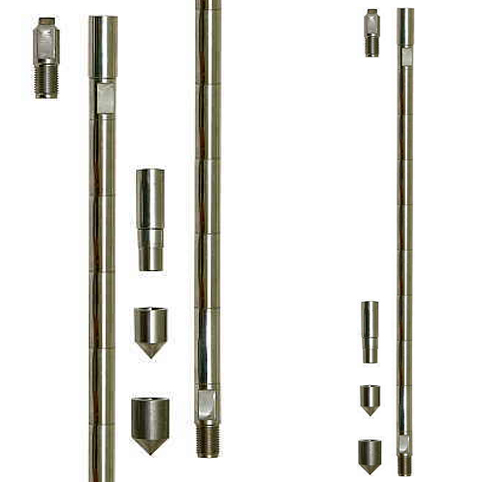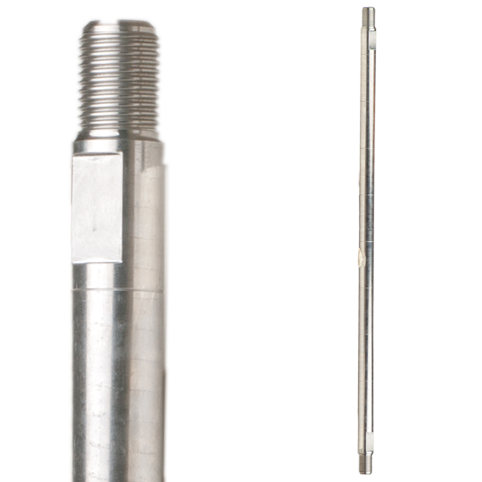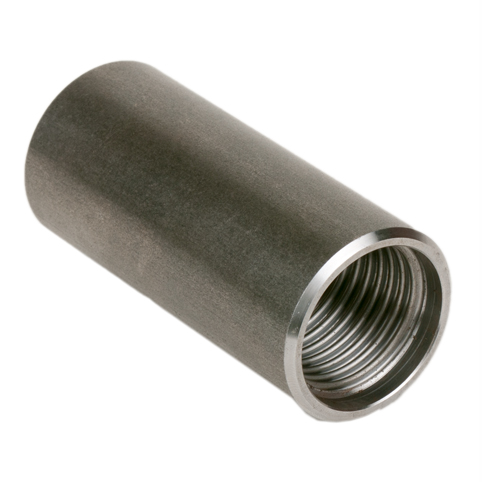Description
The Dynamic Probing test is used to determine the resistance of soils in situ to the intermittent penetration of a cone, driven dynamically in a standard manner and in accordance to B.S. 1377: Part 9.
The equipment consists of a 90° cone which may be sacrificial or retained for recovery, a series of extension or driving rods, a torque wrench and a driving device.
There are two type of test: Heavy Dynamic Probing (DPH) and Super Heavy Dynamic Probing (DPSH). The dimensions of the cone and the mass and drop height of the driving weight differ between the two tests (refer to table below).
The extension rods used in the test are either 0.5 metre long (for top of the hole) or 1 metre long, manufactured from 35mm diameter heat-treated alloy steel, with graduations marked every 10cm along their length. The rods are flush-coupled and designed such that rod ends butt-up fully against each other when driving, forming a continuous jointed series with a straight axis. The thread form has been specifically designed for resistance to the driving force. Rods are furnished with spanner flats at both ends to facilitate connecting and disconnecting.
The driving device may be an Automatic Trip Hammer or a purpose-designed Probing Rig with characteristics conforming to BS 1377: Part 9.
Characteristics of the two types of Dynamic Probing Apparatus
[ultimatetables 23 /]
All cones have a 90° point, and may be sacrificial (without thread), or retained (with thread).





